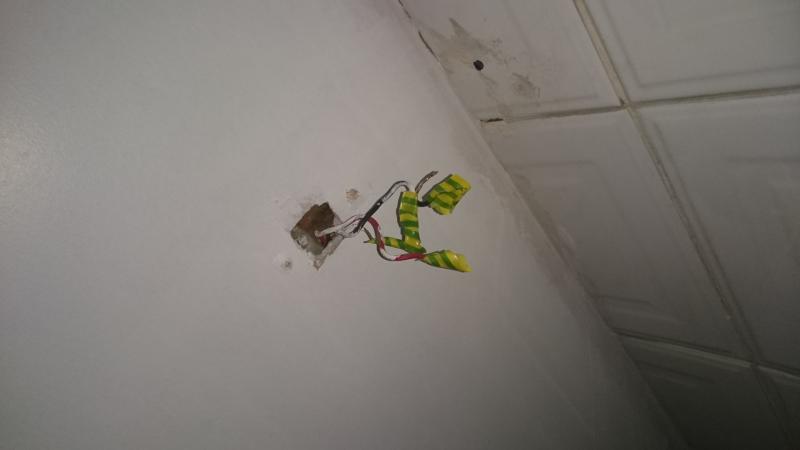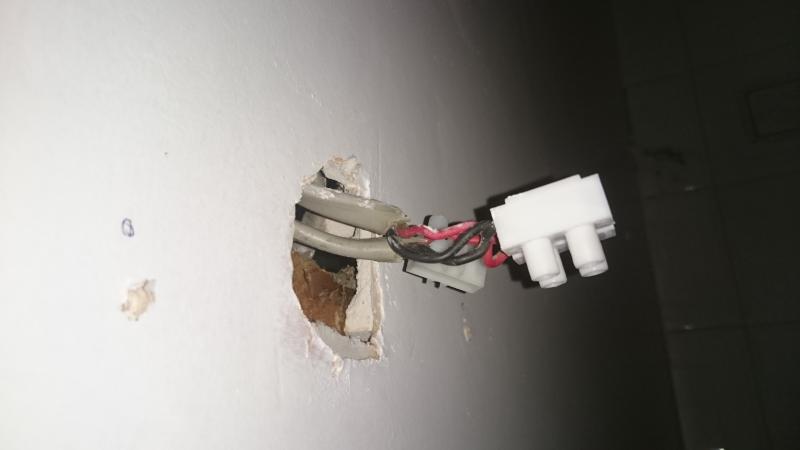Top one is for the pull chord
Bottom is for the light, blacks together and reds together, I know now that this is incorrect,
No markings on the black wires, yes I have had to make alternative fixings to the ceiling, just screwed straight into the joist, pretty certain I haven't gone through any wiring



